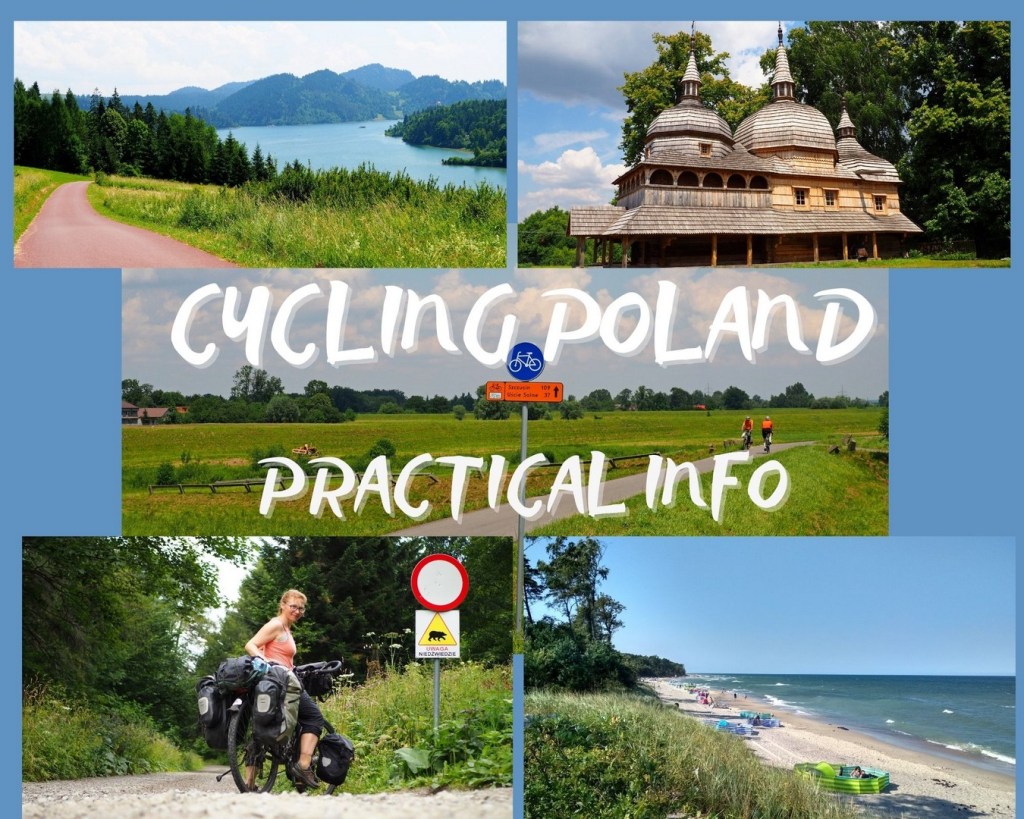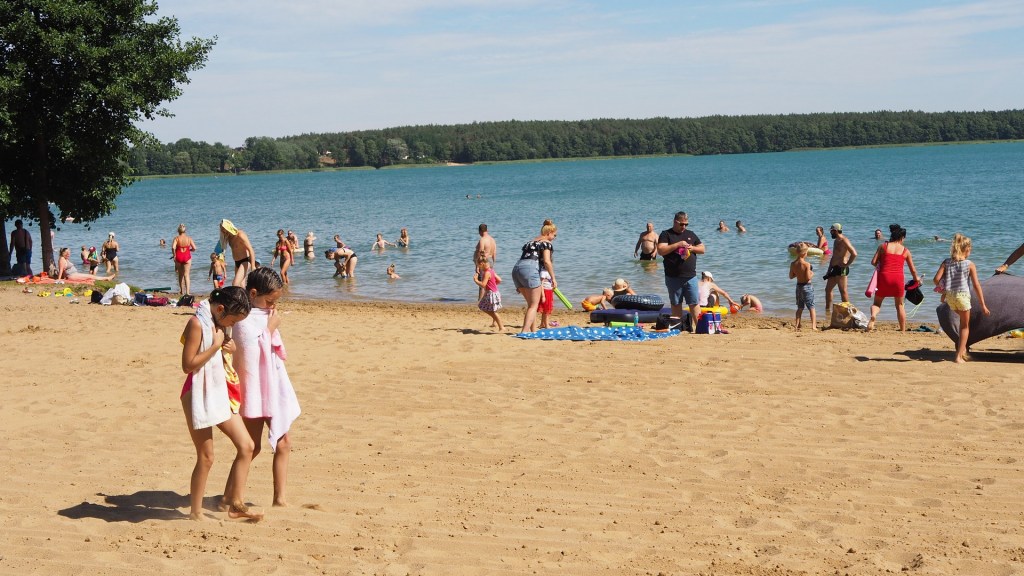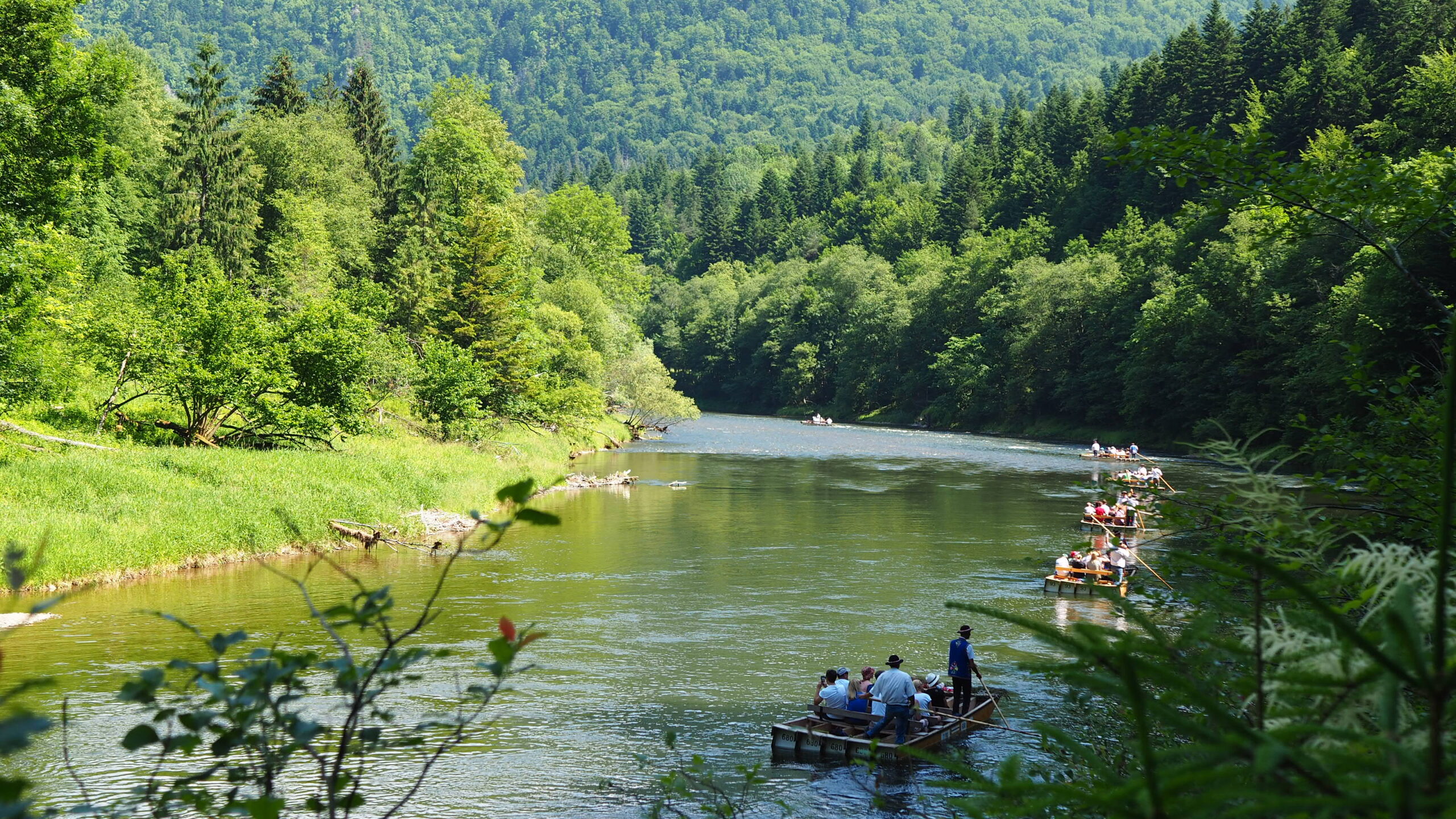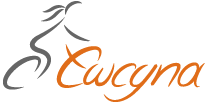
How is it to cycle Poland? Have you been there? Where to go, where to sleep, is it ok to wild camp? How about safety, drinking water? Can you take bicycle on a train? All those questions I’ve been seeing more and more often made me put together all the information in one place (updated 01.2023).
I’m an avid Polish cyclist and have been exploring Poland (and the world) on a bicycle for more than 30 years. Solo and in groups. Renting rooms, pitching tent at campsites or in the wild. I used to organize cycling trips in Poland and abroad – I have quite a bit of expertise and practice.
Poland has never been a top tourist destination and is not a number 1 place to go cycling in Europe but luckily it started to change. It offers a lot – diverse landscape and architecture, more and more cycling paths and trails, lots of backroads to explore. It’s really relaxed when it comes to wild camp (you won’t see many „private property” signs and still far cheaper then in most of Europe.
Ready? Let me give you some tips on cycling Poland. Hope you’ll find it useful.
Przeczytasz tu o:
EXPLORING POLAND ON A BICYCLE – WHERE TO GO?
OK, a short lesson of geography at first if you don’t mind :). Poland is located in the very heart of Europe (so it’s still Central Europe with some eastern feeling). There’s more than 300 km of the Baltic sea coast in the north, vast area of lakes below the coast and in the north-east, hills and high peak mountains in the south. All in between is a lowland that comprises around 70% of territory. So there is a big diversity of landscape and you can choose according to the liking and power in your legs 🙂
What are my favourite areas to cycle in Poland?
The east of Poland in general – from the border with Lithuania and Suwalki region in the north-east corner, all along the eastern border with Belarus (unfortunately due to the immigrants’ crisis restricted in some places), Ukrainian border down to the very south. To me it is where the time stands still, it’s quiet, calm, green, simply beautiful.. lots of forests, meadows, traditional wooden architecture. People speak with an eastern accent (ok, you won’t probably notice!) and do not rush. Take time to talk to a stranger. This is also where the longest cycling trail in Poland GreenVelo has been developed – more about this in the next section.






Lakes regions (the north – west and east) – clean water, forests and hills, yeah! Fresh fish and yummy blackberries. Masuria lakes in the east is usually touristy (but for a reason! – beautiful), but Western Pomerania much less crowded. This region cares about cyclists and has been also investing in good quality cycling roads. Take a look at my posts about cycling the Old Raliway Trail or Western Lakes trail in western Pomerania (2020) for more detailed info.




The mountains – go south
Whenever it comes to cycling the mountains it’s tough, but rewarding. Tatra mountains are the highest and there’s a new trail around the range on Polish and Slovak side but my favourite are Beskidy. Those hills may not seem so but are demanding! It is there that you can find absolutely stunning examples of very unique eastern wooden architecture – recently 16 of the wooden churches / tserkvas there, both in Poland and Ukraine, has been designated as UNESCO world heritage – https://culture.pl/en/article/polands-most-beautiful-wooden-prayer-houses. Google more if interested. Visit the sites of wooden architecture in Malopolska region http://www.drewniana.malopolska.pl/ or podkarpackie https://sad.podkarpackie.travel/en





The Baltic sea coast is a place to go, yes – cycling routes – especially Eurovelo 10/13 – are very well developed there but I would suggest avoiding July and August – during the season it can be a nightmare as it’s packed with people, noisy, just unbearable. As for the cycling infrastructure though, the path along the coast being a part of Eurovelo 10/13 is very well developed especially in Western Pomerania. The part in Pomorskie region (closer to Gdańsk) has still a lot to work on but has been improving its part, too.



Having said that I’ve just spent 3 days in July cycling the Baltic sea on Vistula Spit (Mierzeja Wiślana) and it was truly enjoyable! The path goes through the forest, sometimes close to the sea or jsut by the sea and despite the parts where it was crossing the resorts areas it’s been really quiet. Although it’s forbidden to wild camp on the dunes, the campsites and guesthouses are plentiful and there are some ares where you can pitch your tent wild legally (check my suggestions for camping below!).



The least attractive? To me most of central Poland, my homeland.. it’s simply flat and doesn’t have too much of water reservoirs that make it for great views.
As for the architecture due to the Polish history and the fact that it’s borders has been moved after 1945 (no idea about it? check this short video) the architecture in the west and north, north-east and south-west (ex-Germany, Prussia) is totally different. I call it “red brick” architecture, while the eastern and local one would be originally mostly wooden structures to be found in the east and in the south, south –east. I find it interesting and worth paying attention to.
Where to go if you prefer designated cycling paths?
The network of bicycle roads and trails has been developing the last years but do not expect Poland (at least not all) to be at a high standards of Germany, Austria or France – yes, it has a lot to do with our history, too!. The regions that take cyclists seriously and invest into cycling infrastructure are:
– Malopolska (Lesser Poland) – hilly area in the south with main city Cracow – visit their well taken care of and updated website Visit Malopolska on bicycle to know more. Again – if you like to know more here are my blog posts from cycling the Vistula cycling path in Lesser Poland – east and west side of Cracow (230 km).
– Western Pomerania (neighbouring Germany and the Baltic sea i the north-west). Here are more detailed desriptions of the Old Railway trail in Western Pomerania, the Lakes route as of 2020.
2. CYCLING PATHS AND TRAILS IN POLAND
EUROVELO in POLAND

There are 6 Eurovelo routes are crossing Poland: EV2, EV4, EV9, EV10, EV11 and EV13.
Thing is, you will find just parts of them signed, mostly are just planned :(. Yes, that’s disappointing.
I’ve never bothered to follow them, but came across quite a few. Here is a list of them with some comments.
- EV2 ( Route of the Capitals – in the Polish section from the border with Germany, through Poznań, Warsaw to the border with Belarus); route at planning stage only.
- EV4 (From France to Ukraine – in Poland from the border with the Czech Republic, through Krakow, Rzeszow to the border with Ukraine); in Malopolska/Lesser Poland EuroVelo4 is marked as VeloMetropolis/WTR (not EV4) and there is no target passability at the entrances to Krakow. It is partly marked in Silesia region, too.
- EV9 (From the Baltic to the Adriatic – in Poland from Gdansk, through Poznan, Wroclaw, to the border with the Czech Republic); it is signed well from Poznań south and is being signed in the north, Pomorskie region.
- EV10 (Route around the Baltic – in Poland from the border with Germany, through Swinoujscie, Gdansk. To the border with the Kaliningrad Oblast); it is pretty well signed in both Western Pomerania and Pomerania regions together with EV 13
- EV11 (Eastern European Route – in Poland from the border with Lithuania, through Warsaw, Kraków to the border with Slovakia).
- EV13 – Iron Curtain Route – in Poland coincides with the route along the Baltic Sea; it is pretty well signed in both Western Pomerania and Pomerania regions together with EV 13
Here a link to Eurovelo routes in Poland https://en.eurovelo.com/poland

Recommended bike trails in Poland
Greenvelo – the eastern Poland cycling trail
GreenVelo is the longest marked cycling route in Poland, with a length of nearly 2000 km. It was the “hit” and the most important cycling project of the last years in Poland, supported by EU funds. It has a designated webpage, the app, lots of brochures available in Tourist Information points and great system of rest areas with maps and shelters called MOR (used for wild camping with no problem as well).










The idea was really good and it meant to attract cycling tourists to the less visited or developed areas in Poland. Well – we, the Polish cyclists knew about and loved visiting them before :). What went in many places wrong was the implementation – in different regions differs a lot, so be ready! It can be a brand new separate cycling asphalt path or it can lead you on hardly passable, sandy roads. Although it takes you to hundreds of interesting places it skips some very interesting ones (like the UNESCO heritage renaissance city of Zamość) so you need to be aware and make a turn.
Western Pomerania (north-west)
Western Lakes route, Old Railway route, along the Baltic sea route – just go to https://rowery.wzp.pl/en and/or download and app!






Malopolska (Lesser Poland) – central south
So much choice here! Vistula cycling route if you want to take it easy and flat, and around the Tatra mountains are the best choices. The website is also well prepared and updated. https://narowery.visitmalopolska.pl/en_GB/






Once in Malopolska, you can hop on the most popular and picturesque cycling trail in Poland which is Velo Dunajec that joins Zakopane in Tatra with Vistula cyclling route and Cracow






or around Tatra cycling loop shared with Slovakia



Other trails
There are many other, shorter trails. Sometimes you will see a cycling sign on a tree by the road – these are local trails, following roads with smaller traffic, but the quality of the surface may is a guesswork.
There is a new project to bring toghether all the maps in Poland and it’s called Velomapa.pl – still in Polish though, but good initiative.
In general when cycling just use backroads, there are plenty.
DO NOT CYCLE on national highways (two digit numbers like 16 etc.). Yes, it is allowed, but super dangerous and not nice, as they tend not to have a shoulder and with so many cars and trucks passing by it’s not much about bicycle touring.
3. WHERE TO STAY?
Hotels/ Agroturystka (Agrotourism/ guesthouses/ Rooms to rent
Let’s start with agroturystyka, as hotels are self-explanatory. Agroturystyka usually means accommodation somewhere in the countryside and close to nature, usually simple but you can find more posh and luxury options, with a breakfast or full board etc.
In some countries like Italy staying in agrotourism is really expensive, in Poland, even though in 2022 the prices went up a lot but I would say you can still find a place for as little as 40/50 PLN (10 EUR), but more common will be now from 80 PLN/person and more. 15 EUR as an average.
Rooms to rent (POKOJE DO WYNAJĘCIA in Polish) tend to operate just in the season in the most touristy areas like the seaside / lakes / mountains.
How to book? Well, you will find most on booking.com or AIRBNB. Typically Polish site is www.nocowanie.pl, where I guess there are cheaper places, but it’s just in Polish (again!).
If you don’t mind asking at the last moment you can do it when passing by – usually can negotiate a better price, too.
Campsites / campgrounds (in Polish: Kemping / pole namiotowe)
There not as many as in the western Europe but there are between 300-400 operating campsites in Poland. Usually in the season (mid June – mid September) but some are open year-round.

The Polish Federation of Camping and Caravaning associates the campsites in Poland (not all though). It checks them though regularly and keeps a track of it. Their page is so old-fashioned and has no English version L, so let me give you the link to the map where you can search by the region (voivodship).
http://www.pfcc.eu/pol/main.php?nazwa=b.c.woj
You can use this map of Caravaning.pl https://polskicaravaning.pl/kempingilooks a bit better:
or simply google “camping” on the google maps.
Worth noting that the simplest version of Camping is in Poland called “pole namiotowe” – means “tent field”. Usually there are just some basic toilets/showers and not much there, but the price is usually low – 4-6 EUR.
How much does a camping cost in Poland? The price for a regular camping for a person and a tent would start from 30/35 PLN – 50-60 PLN (7-13 EUR). Nothing like a crazy 20 – 30 EUR.
Stealth / wild camping in Poland – legal/not legal?
My favourite. Those who have had a wake-up call after a night out in nature know that it’s priceless memories, a quality night’s sleep and mostly a stunning view in the morning.
Quite recently to my surprise I’ve read some info about young long-distance bike travellers that were crossing Poland and found it hard to wild camp, because they claimed that “wild camping is illegal in Poland”. My eyes opened wide as I do not know many countries, and I’ve crossed 50 or more on my bicycle, that is as little problematic when it comes to wild camp as Poland. Most probably the law is about campers and cars, but hey, we are on a bicycle and assuming that one sets up a tent just overnight, behave and leaves no trace it’s simply widely accepted.
You can also pitch a tent „in the wild.” However, remember that camping is prohibited in nature reserves and national parks. You should also not trespass on private property without permission


Wild camping in the forest in Poland – can be legal!

Here comes the great news! It’s been just since 2020 that the State Forests have launched a program allowing people to stay legally at designated areas in the forest! You can stay overnight at designated locations even without reporting it to the State Forest/ Forestry Commission, provided that no more than 9 people will stay overnight at a given location and/or the stay will last no longer than 2 nights.
Sounds good, doesn’t it?

I’ve tried it in a few locations already and sometimes you can have a great forest clearing with some shelter to use, sometimes it’s basically nothing..
The best is to use a website www.czaswlas.pl– once you see a map click on a tent icon – the red areas are free to camp, the tent icons show bivouac places.
Note: Wild camping is not allowed on the beaches, in nature protected areas and in national parks (obviously)
Other useful websites or maps for camping
Wiating.eu

Staying at/close to the shelters has been my favourite in South Korea, recently there has been many built in Poland too. The most useful recently has been the map of wooden shelters (called wiata in Polish) www.wiating.eu. You can click on to see how it works. It was meant to show the shelters and huts mostly in the mountains, but it grew to a all over Europe base.

Well, there might be people there of course, drinking parties at night (weekends), but I tend to check them, too. Very useful.
GRUPA BIWAKOWA app (Bivouac group)
– it’s in Polish, too but the icons do the job. It comprises both payable and free places good to camp – campsites, tent fields, shelters, parkings and other spots. I check it regularly.


Asking a local farmer for a campground on their pastures is always a good idea.
Staying with locals – Warmshowers, Coachsurfing and other
The Polish are quite active at hosting platforms (but I’ve done it maybe 3 times – wild camping is so easy!).
My hint:
Whenever I pass countryside there are often newly built playgrounds with some fitness areas, there’s usually a shelter etc. Not to mention a community center building (called Świetlica wiejska in Polish). These are public areas and unless they are just by the busy road I find them really useful and good for overnight stay. I usually go to ask at the closest building if it’s ok to put up a tent there and usually the people say “I do not know, why not, if you are not scared..”. Sometimes if it’s really late I might not even ask.


OTHER USEFUL INFO
Taking bicycles on trains in Poland
Good news! Bikes are allowed on most trains in Poland, but it might be tricky as different rules apply.



There are long distance trains (EIC/IC/TLK) that require obligatory booking a space together with your ticket (price is 9,10 PLN – 2,5 EUR). In the season they might be pretty much booked up. Usually you are not allowed to take a bicycle on a night train, but it in some cases there is a space for bikes. Novelty to me. You can check the timetable and if the train takes the bicycles here https://rozklad-pkp.pl/en. Tick the bicycles box first.
Taking on a regional train is maybe easier, but there are many regional train companies and they have their own rules and it’s hard for us, Poles to understand them so I am not capable of doing that. Usually though it’s much easier to take a bicycle on a regional train – there are racks for bicycles or a luggage space. I prefer those as I do not have to take the bags off the bicycle. Sometimes the trains will be brand new, sometimes old style with uncomfortable stairs – hard to say. Usually you have to pay for a bicycle, but some regions like my favourite local Masovia region take bicycle for free.
Bicycles are usually not allowed on any buses or coaches, but free market, you know… Just talk to the driver 🙂
Drinking water in Poland
I haven’t thought about it before since I’m used to just drink water from nearly any tap in Europe and do not buy it unless I need some bubbles, but saw this question coming. So – yes, you can drink tap water in Poland and no, no filter needed! If you need some water just ask anyone, the houses you are passing, shops and groceries (not a bottled one to buy! they have taps inside shops). Last but not least – look at cemeteries. Just make sure you do not was your body at a cemetery.
SAFETY – cycling in Poland
Well, I might not have the right perspective as Poland is my homeland I’ve been eploring for so long, but after having visited 50 countries I would say when it comes to sharing the road with cars it’s neither dangerous nor super safe. What I would ALWAYS avoid are big, national roads (two-digit number like 10 ir 16 etc.). That’s obvious these roads are for cars but I still see cyclist trying to take it and no – it’s not a good idea! Usually there is no shoulder and those roads are full of cars and trucks. Take a backroad – there a plenty of!
DOGS
Yes, unfortuantely you may encounter dogs wandering around as the law is not strict in this matter and frankly speaking the culture in Poland has been to let them do so. Much more in the villages, not that much in the cities. Not all dogs have owners neither. So yes, you may have problems with dogs and please, be careful. I’ve never had a serious problem in Poland but you never know.
What to do if they chase you? Do not run/ cycle away! Move slowly or/and stop. What I’ve learnt and has worked for me best is to stop and – if still necessary – shout. It confuses the dogs, because they expect you to run away and them to chase you. You may pretend to be taking something from the ground (a stone) or really take it. At this point they should turn back and flee. Some people carry ultrasonic dog repeller.
SUMMARY
That was a lot of info, but I hope all the info helps you to plan your cycling trip to Poland. If there’s anything missing here please let me know.
❗🙏
Knock, knock! It took me a lot of time to prepare the content and I keep on updating it.
If you find it useful would you consider a donation? That will help me to explore more and share more info to others. Thank you!
Happy cycling!














5 comments
thanks for this article. is it easy to find drinkable water in the east of Poland, along the border with Belarus and Ukraine ? I’m from France, here there is water in cemeteries, very useful for drinking and washing myself.
Hi there! You know, we are in Europe, where water is not scarce.. so yes, absolutely, plenty of there as well! Unfortunately we do not have many free-standing taps as in Greece, Italy but cemeteries are always good – use them by myself all over the world. If not just ask anyone, or in the shops, people tend to have wells in this area still – water is usually great there. BTW, a friend of mine, a South-African female bike explorer cycled Poland in fall last year and fell in love with – check it if you like https://www.instagram.com/rawcandyrides/
Fantastic information Ewa. Thankyou so much
Hi Ewa, i’ve found your blog by chance. It’s really useful and very well made, your work radiates passion. Thank you so much. I’m cycling in Poland once a year for 2-3 weeks, mainly in august. Augutsow-Suwalki, is my playground as I’m based in Sokolka when I’m there. The potential of this region is huge, can’t wait to be there in a few months again.
Thanks a lot, glad it was helpfulQ. Lots of passion for cycling and seeing places indeed. 🙂